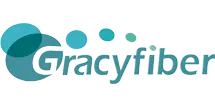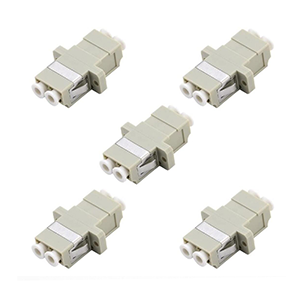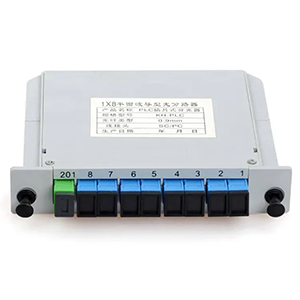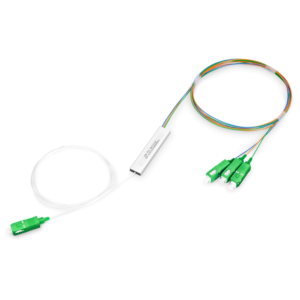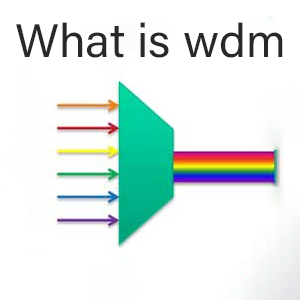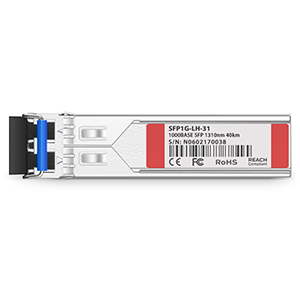In this article, I will introduce you to the concepts and functions of SC and LC fiber optic connectors. We will explore their characteristics, advantages and applicable scenarios. By gaining an in-depth understanding of SC and LC connectors, you will be able to choose the connector that suits your network needs and brings greater reliability and performance to your network architecture. Let us explore the characteristics of SC and LC connectors together to provide you with the best fiber optic connection solutions!
What is SC fiber optic connector
The SC connector is a common fiber optic connector with well-defined design standards. The following is an introduction to the definition, design, physical characteristics, connection methods, advantages and applicable scenarios of SC connectors.
-
Definition and design:
SC connector stands for “Subscriber Connector” (user connector) or “Standard Connector” (standard connector). It is a precision fiber optic connector that complies with TIA/EIA-568-B.3 standard and IEC 61754-4 standard. SC connectors usually use a two-way locking mechanism, making it easier to insert and remove fiber while ensuring the stability of the connection.
Physical features and connections:
The physical characteristics of the SC connector are as follows:
- Shell shape: The SC connector adopts a square shell, usually a rectangular shape of 2.5mm x 6.25mm.
- Locking mechanism: SC connector adopts a two-way locking mechanism, which locks the connection by inserting the connector and pressing down, and then rotating 90 degrees to ensure the stability of the connection.
- Fiber Type: SC connectors are available for single-mode and multi-mode fiber.
SC connector connection methods include:
- Link method: The SC connector adopts a direct plug-in connection method. The optical fiber is inserted through the ferrule of the connector and contacts the optical fiber inside the connector.
- Alignment method: SC connectors use a precise centering mechanism to ensure precise alignment between optical fibers to minimize the loss of optical signals.
Advantages and applicable scenarios:
SC connectors have the following advantages and applicable scenarios:
- High reliability and stability: The two-way locking mechanism of the SC connector ensures the firmness and stability of the connection, reducing the risk of loose or disconnected connections. This makes SC connectors very suitable for applications that require high connection reliability.
- Suitable for single-mode and multi-mode optical fibers: SC connectors can be suitable for single-mode and multi-mode optical fibers, giving them wide compatibility and application flexibility.
- Commonly used in local area networks and data centers: Due to its reliability and stability, SC connectors are often widely used in scenarios such as local area networks (LAN) and data centers for optical fiber connection and transmission.
In summary, the SC connector is a precision fiber optic connector with a square housing, a two-way locking mechanism, and precise alignment. It has high reliability and stability, is suitable for single-mode and multi-mode optical fibers, and is commonly used in scenarios such as local area networks and data centers.
What is LC fiber optic connector
The LC connector is a common fiber optic connector with well-defined design standards. The following is an introduction to the definition, design, physical characteristics, connection methods, advantages and applicable scenarios of LC connectors.
-
Definition and design:
LC connector stands for “Lucent Connector” or “Little Connector”. It is a miniaturized fiber optic connector that complies with TIA/EIA-568-B.3 and IEC 61754-20 standards. The pluggable design of LC connectors makes them very popular in high-density fiber optic connection applications.
Physical features and connections:
The physical characteristics of the LC connector are as follows:
- Shell shape: The LC connector adopts a rectangular shell, usually a small size of 1.25mm x 6.25mm. Compared to other connectors, it is smaller and takes up less space.
- Locking mechanism: LC connectors usually use a zipper mechanism to insert or pull out optical fiber by pulling the pull ring on the connector to ensure the stability of the connection.
- Fiber Type: LC connectors are available for single-mode and multi-mode fiber.
The connection methods of LC connector include:
- Link method: LC connector adopts a direct plug-in connection method. The optical fiber is inserted through the ferrule of the connector and contacts the optical fiber inside the connector.
- Alignment method: LC connectors use a precise alignment mechanism to ensure precise alignment between optical fibers to minimize the loss of optical signals.
Advantages and applicable scenarios:
LC connector has the following advantages and applicable scenarios:
- Miniaturization and high density: The small size of LC connectors enables higher fiber connection density in limited spaces. This is beneficial for high-density environments that require large numbers of fiber connections, such as high-speed network switches in data centers and network equipment.
- Suitable for single-mode and multi-mode optical fibers: LC connectors can be used for single-mode and multi-mode optical fibers, providing compatibility and flexibility.
- Commonly used in high-speed networks and fiber-to-the-home (FTTH): Due to the characteristics of miniaturization and high density, LC connectors are often widely used in high-speed networks, such as Gigabit Ethernet and fiber-to-the-home (FTTH). ) and other scenarios.
In summary, the LC connector is a miniaturized fiber optic connector with a rectangular housing, zipper mechanism, and precise alignment. It has the advantages of miniaturization and high density, is suitable for single-mode and multi-mode optical fibers, and is often used in scenarios such as high-speed networks and fiber-to-the-home (FTTH).
SC vs LC: Performance comparison
SC and LC connectors are two common fiber optic connectors, and they have some differences in performance. The following is a comparison of the differences between SC and LC connectors in terms of mating times and insertion loss, size and density, installation and maintenance costs, and applicable network speeds:
Plug and unplug times and insertion loss:
- Plugging and unplugging times: SC connectors usually have a high number of plugging and unplugging, generally up to more than 1,000 times. The number of plugging and unplugging times for LC connectors is usually around 500 times. Therefore, SC connectors are more durable in scenarios that require frequent plugging and unplugging.
- Insertion loss: The insertion loss of SC connectors is relatively low, usually around 0.1 dB. The insertion loss of LC connectors is also low, usually below 0.2 dB. The two have similar performance in terms of insertion loss, but the SC connector is slightly better than the LC connector.
Size and Density:
- Size: The LC connector is smaller than the SC connector, and its size is about half that of the SC connector. This makes LC connectors more suitable in high-density fiber connection environments, allowing more connections to be made in a limited space.
- Density: Due to the small size of the LC connector, it is able to provide higher density of fiber optic connections. For scenarios that require a large number of connections, such as data centers and high-speed network switches, the density advantage of LC connectors is more obvious.
Installation and maintenance costs:
- Installation: Installation of the SC connector is relatively simple because it has a clear locking mechanism that only needs to be rotated 90 degrees to lock when inserted. The installation of LC connectors requires more precise alignment and requires slightly higher skills of workers.
- Maintenance cost: Because the SC connector has a higher number of plugs and unplugs and a more stable connection, it has a relatively low cost in terms of maintenance. LC connectors may require more time and effort to maintain due to their small size and tight connections.
Applicable network speed:
- Both SC and LC connectors can be applied to various network speeds, including Gigabit Ethernet (Gigabit Ethernet) and 10 Gigabit Ethernet (10 Gigabit Ethernet). They all meet the needs of high-speed networks and support multi-mode and single-mode fiber.
To sum up, there are some differences in performance between SC connectors and LC connectors. SC connectors have higher mating and unplugging times, slightly lower insertion loss and larger size, and are suitable for scenarios requiring high reliability and stability. The LC connector has a smaller size and higher connection density, and is suitable for environments that require high-density fiber connections. Choosing the right connector depends on specific application needs and budget constraints.
How to choose a suitable connector
Selecting a suitable connector usually requires consideration of the following key factors: network environment and application scenarios, required bandwidth and speed, equipment and rack space, as well as budget and future expansion needs. Here are some considerations on how these factors impact choosing SC or LC connectors:
Network environment and application scenarios:
- High-density environments: If you need more fiber connections in a limited space, the LC connector may be more suitable due to its small size and higher connection density.
- Bandwidth requirements: If you need higher bandwidth and speed, such as a network above 10 Gigabit Ethernet, the SC connector may be more suitable because it has lower insertion loss and higher insertion loss. Number of pulls.
Required bandwidth and speed:
- SC connector: If you need to support higher bandwidth and speed, SC connectors usually have lower insertion loss and are suitable for high-speed network environments.
- LC connector: If your bandwidth requirements are lower, such as a Gigabit Ethernet-level network, the LC connector is a more common choice.
Equipment and rack space:
- Device space: If your device space is limited, the small size of the LC connector can help you achieve higher connection density because it takes up less space.
- Rack Space: If you have limited rack space, LC connectors can help you accommodate more connections in the rack, providing greater flexibility and scalability.
Budget and future expansion needs:
- Budget: The SC connector generally has lower maintenance costs because of its higher mating times and stable connection, but accordingly, its initial cost may be higher. LC connectors may require more maintenance costs, but their initial cost is lower.
- Future expansion needs: If you anticipate needing to add more connections or upgrade to higher bandwidth and speed in the future, the LC connector may be more scalable because it can accommodate more connections in a limited space.
Based on the comprehensive consideration of the above factors, you can choose a connector that suits your specific needs. If you need high-density connections, lower insertion loss and smaller size for environments with lower bandwidth requirements and limited space, LC connectors may be a better choice. If you need to support higher bandwidth and speed, higher mating and unmating times, and anticipate more expansion needs, SC connectors may be more suitable for your needs.
Summary
Thank you for reading our blog! Through the discussion in this article, you will have a more comprehensive understanding of SC and LC fiber optic connectors. SC connectors are widely used in scenarios such as local area networks and data centers due to their high reliability and stability. LC connectors have become the first choice in fields such as high-speed networks and fiber-to-the-home (FTTH) due to their miniaturization and high density.
When selecting a connector, key factors include network environment and application scenarios, required bandwidth and speed, equipment and rack space, as well as budget and future expansion needs. Our products provide various types of fiber optic connectors to meet different needs of network architectures.
SC vs LC Fiber Optic Connectors FAQ
The main difference between SC and LC connectors is their size. SC connectors are larger and use a square-shaped push-pull mechanism, while LC connectors are smaller and use a small, latch-style mechanism.
Both SC and LC connectors are widely used in the industry, but LC connectors have gained more popularity in recent years due to their smaller size and higher density capabilities.
The advantage of using SC connectors is their robustness and durability. They are designed to withstand repeated mating cycles and provide a secure connection, making them suitable for applications where connection stability is critical.
The advantage of using LC connectors is their smaller size, which allows for higher density installations. LC connectors are commonly used in high-density environments such as data centers where space is limited.
No, SC and LC connectors are not directly compatible with each other. They have different sizes and connection mechanisms, so adapters or hybrid patch cords are required to connect a cable terminated with one connector to a device or cable terminated with the other connector.
Both SC and LC connectors are relatively easy to install. However, due to its larger size, SC connectors may be slightly easier to handle during installation and removal.
Both SC and LC connectors can be used with single-mode fiber. The choice of connector depends on the specific application, available space, and preferences of the network installer.
Both SC and LC connectors can be used with multimode fiber. Again, the choice of connector depends on the specific requirements of the network and available equipment.
Yes, adapters are available that allow for conversion between SC and LC connectors. These adapters are useful when connecting devices or cables with different connector types, allowing for seamless integration in mixed connector environments.
